All products featured are independently chosen by us. However, SoundGuys may receive a commission on orders placed through its retail links. See our ethics statement.
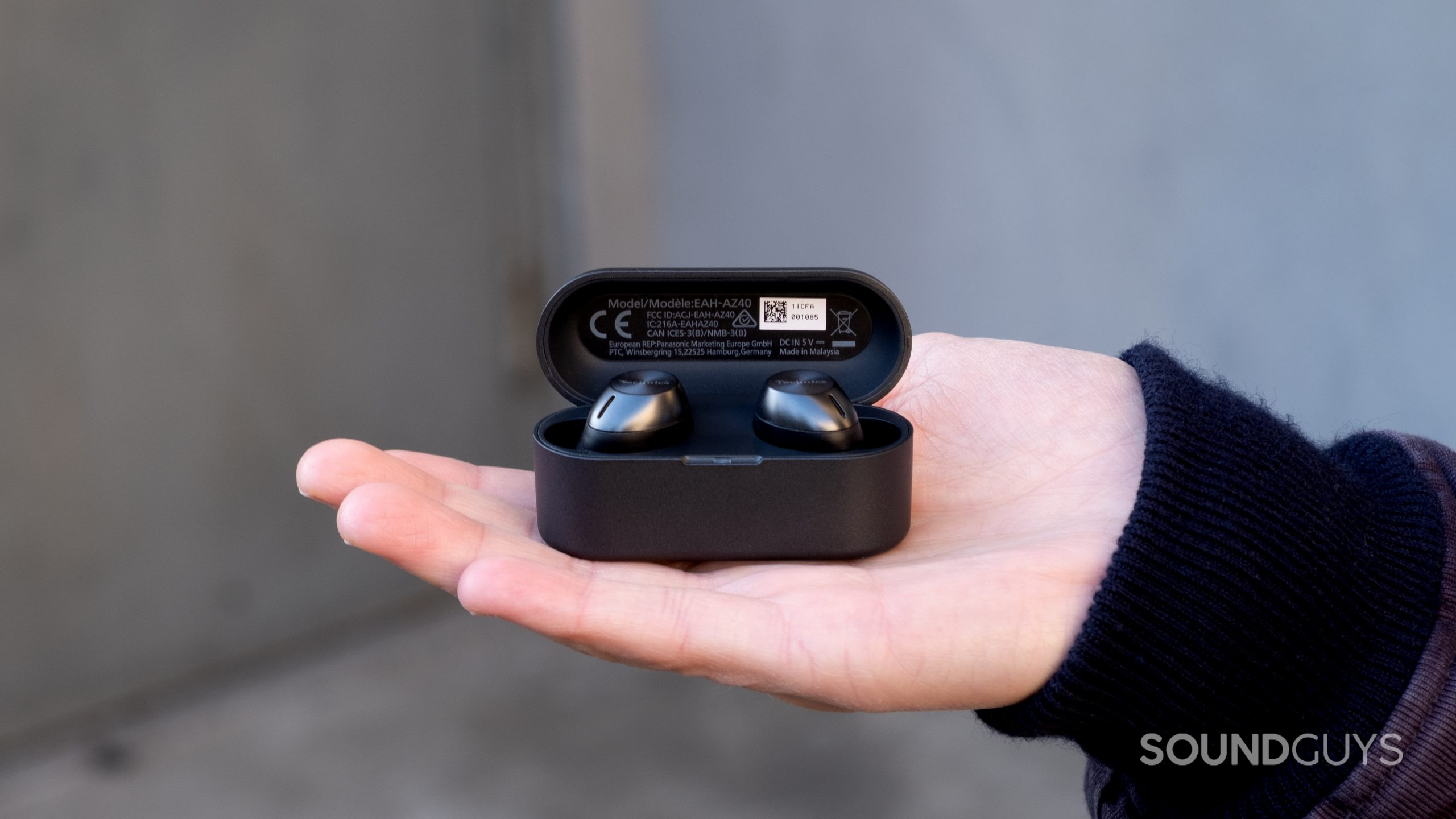
Technics EAH-AZ40 review
Published onMarch 8, 2022
Technics EAH-AZ40
Writing a review for the Technics EAH-AZ40 true wireless earbuds, it’s hard not to think about the legendary Technics SL-1200 turntable series, which is constantly sold out and still a mainstay for vinyl DJs. Panasonic subsidiary Technics is a beloved Japanese brand, and its products have always evoked a kind of mystique for lots of music fans.
Do these true wireless earbuds sound good enough to make it worth buying into that legacy?
Who should buy the Technics EAH-AZ40?
What is it like to use the Technics EAH-AZ40?
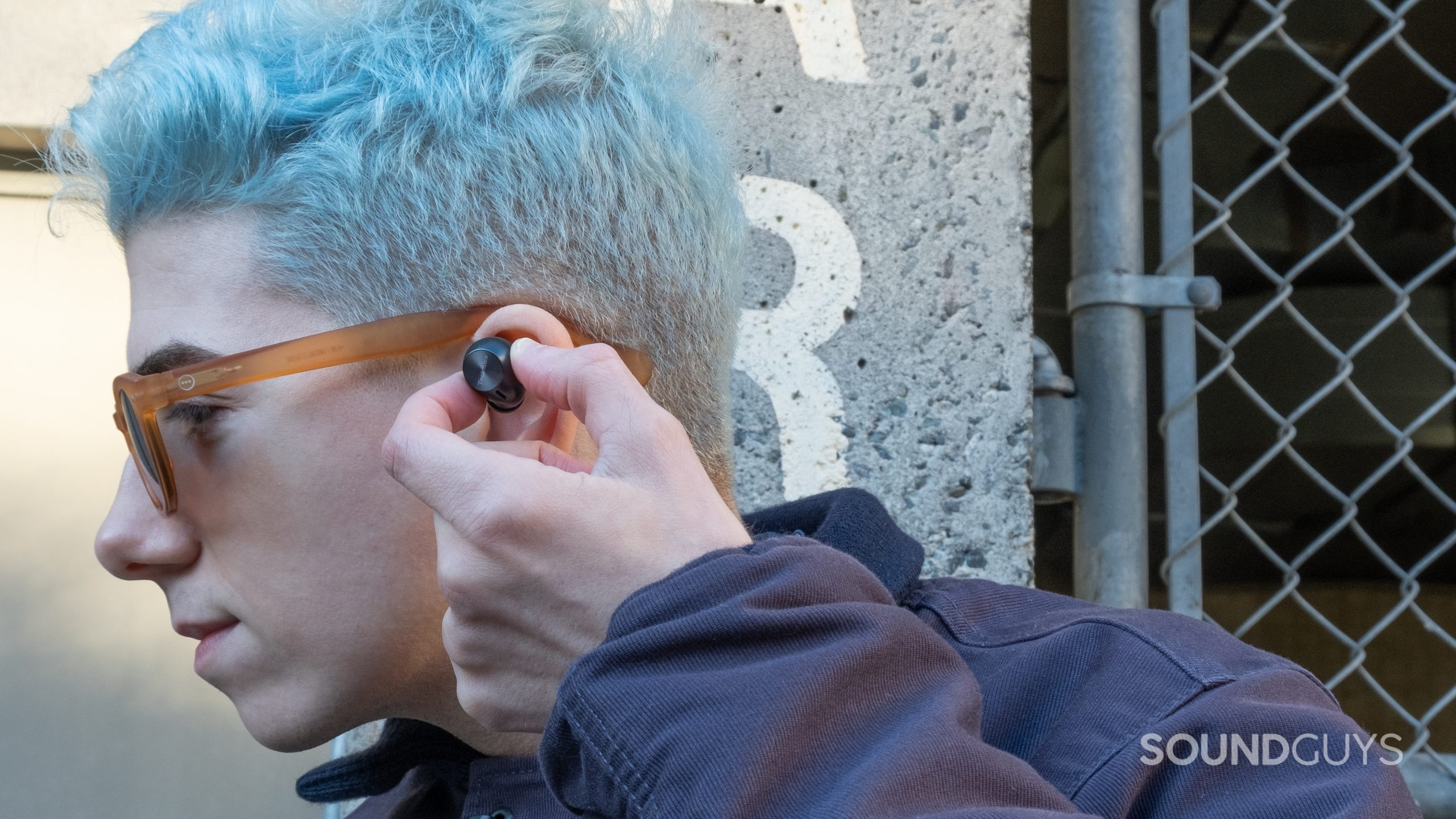
Out the gate, the Technics EAH-AZ40 feels super lightweight. How Technics fit a battery into this 30g case is anyone’s guess. The buds weigh in at 5g each as well. Available in Black, Silver, or Rose Gold, the buds have a sporty but elegant look—like a Sony and Jabra combo. In Black, the EAH-AZ40 buds sport three different shades of black, with a semi-matte interior side, and a slightly shinier housing framing the sunburst black touchpad with the Technics logo.
Technics ships the EAH-AZ40 with four ear tip sizes: 10mm, 11mm, 12mm, and 13mm. The ear tips are made of average quality silicone. My compliments to Technics for keeping the packaging paper-based, including the handy ear tip holder too.
The earbuds feel light, if somewhat invasive. With the 12mm ear tips the buds stay secure, requiring very little in the way of adjustment. I find it gets uncomfortable if worn for hours, due to the shape of the in-ear 6mm driver housing. However, I would not hesitate to go for a jog with the EAH-AZ40. Technics is sure to let you know that only the earbuds merit an IPX4 rating, not the case.
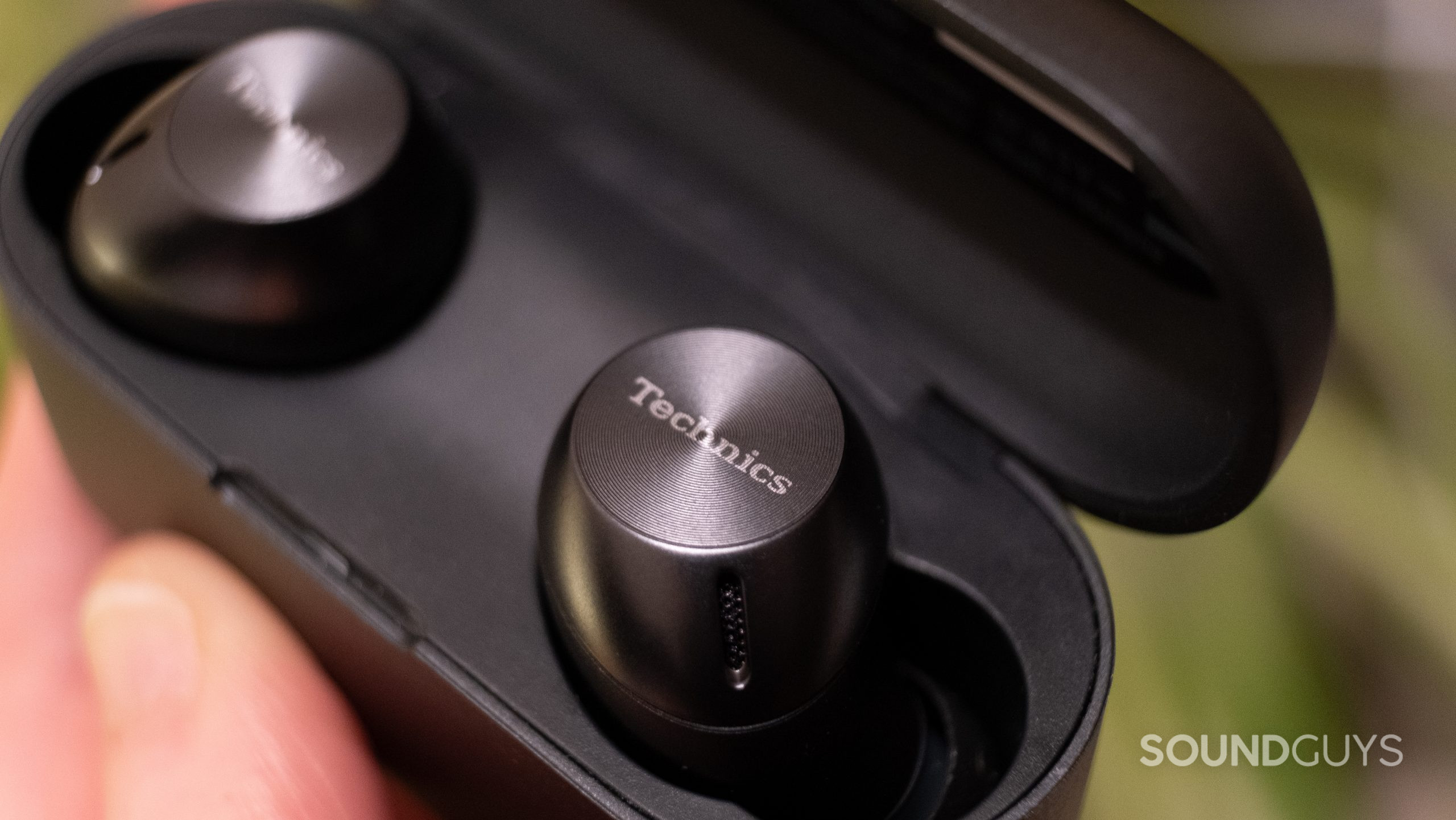
The EAH-AZ40 USB-C charging case is not as durable as I’d like. It’s lightweight and easy to hold while plucking or replacing the buds—the shape is reminiscent of an éclair—but the plastic lid has too much flex. The hinge has very little lateral play and can prop the buds up. It will survive a drop onto the carpet, but if it lands at the wrong angle on concrete, the lid could be a goner. This is a bit of an issue for a lot of true wireless charging cases. Small cases like this one are handy for even the tiniest pockets, but they’re also easy to misplace.
How do you control the Technics EAH-AZ40?
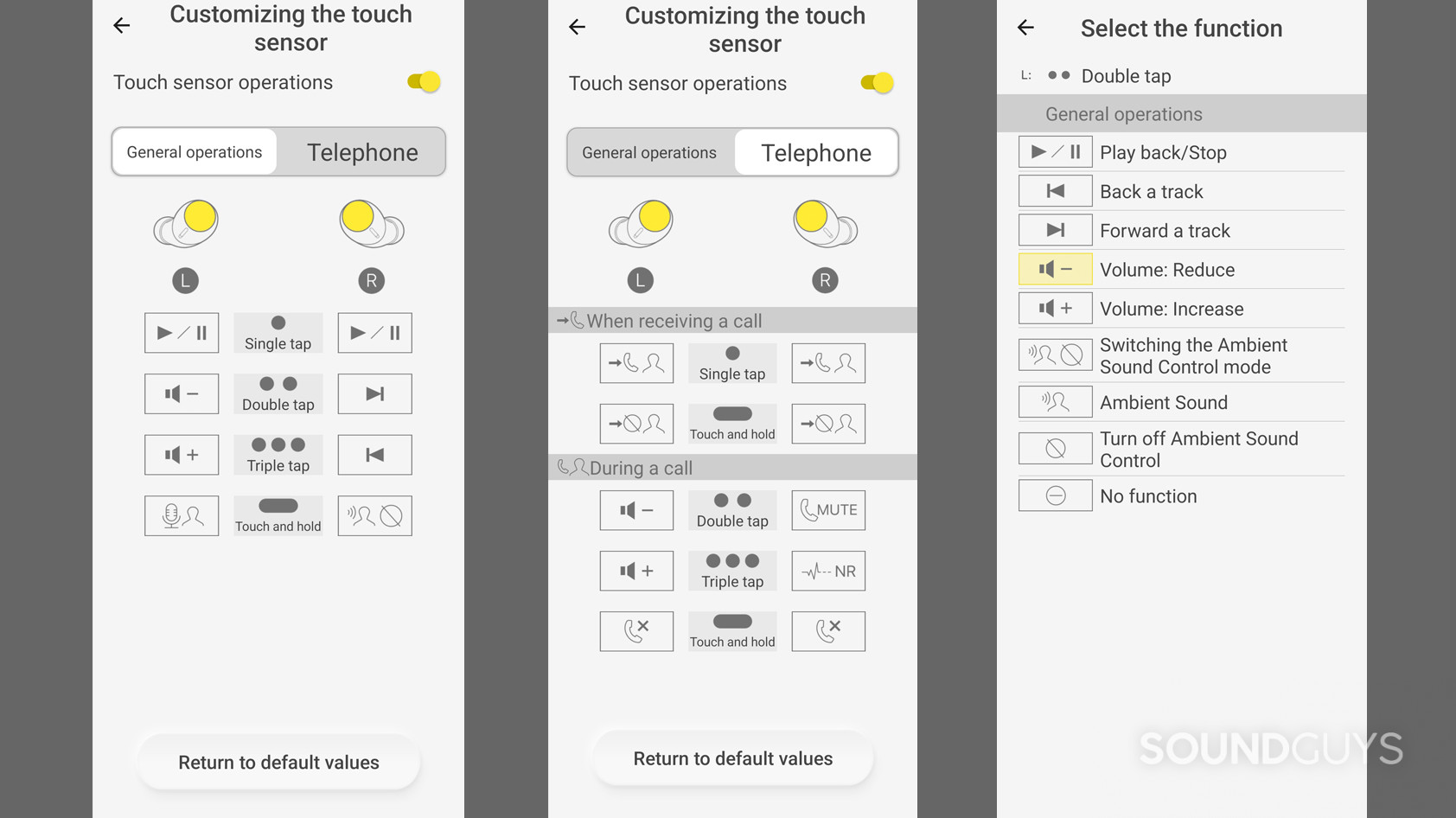
A series of taps on the touch sensor will adjust the majority of your settings. You can alter them in the Audio Connect app as well. Because the touch sensor is flat and texturally different from the rest of the earbud, you’ll have no trouble differentiating the sensor from the housing. This avoids the majority of misfires.
Should you get the Technics Audio Connect app?
Audio Connect (iOS and Android) is where you find updates and can change EQ settings among other features like Ambient modes, so you should definitely get it. With that said, let’s discuss the irritating names companies give to apps. This is a Technics app and it’s for earbuds, and when I search “Technics” to find it, three apps appear. Be sure to select “Technics Audio Connect,” rather than “Technics Audio Center” or “Technics Music app.”
Whether the buds are connected or not, there’s a constant notification on my Android device informing me of its connection status. I find this superfluous. If in doubt you can check the Bluetooth settings; nobody needs a notification.
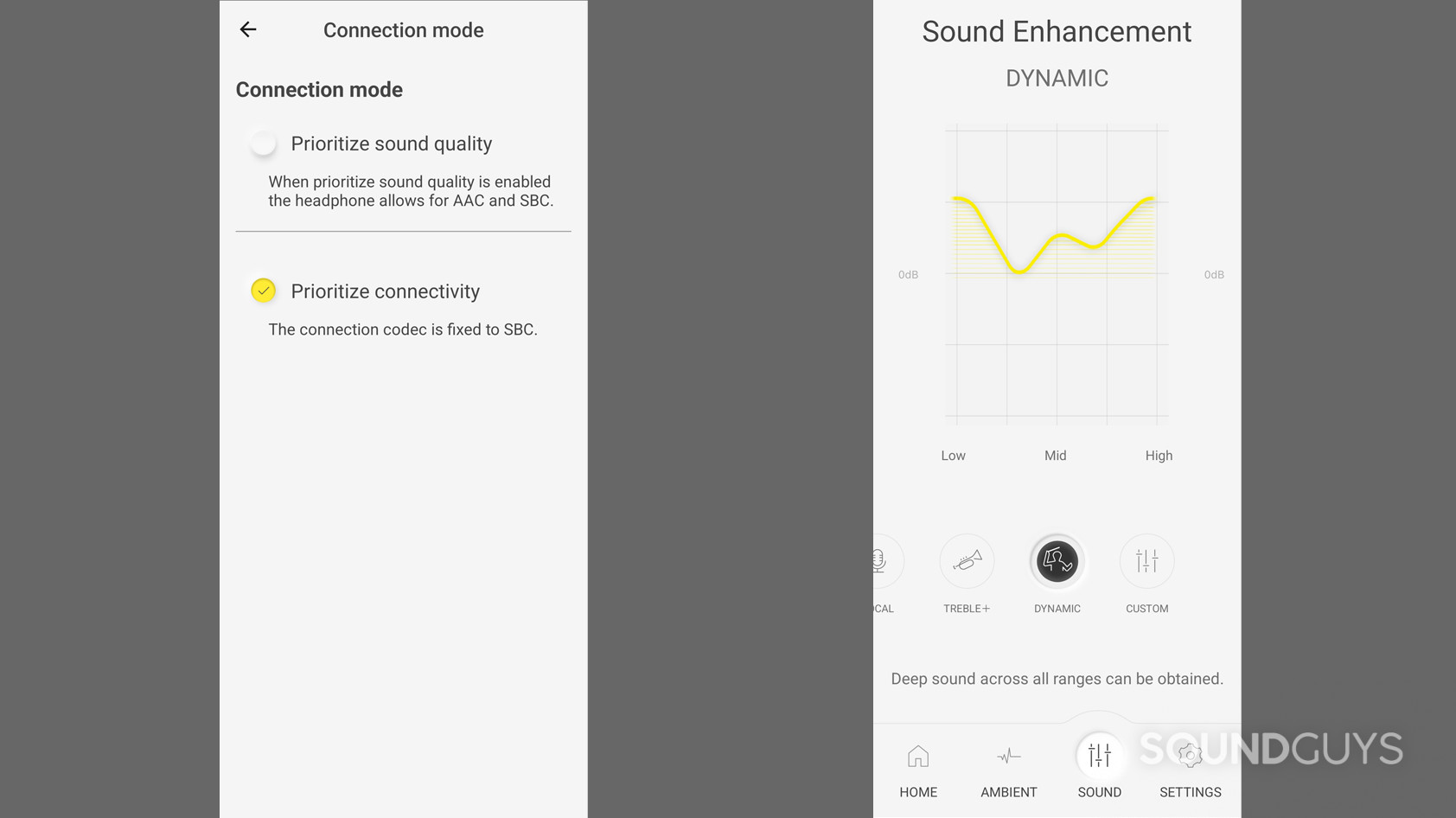
The basic functions of the app include turning Ambient Sound Control on or off, choosing one of four EQ presets (or making your own), Find headphones, choosing your audio codec, and customizing touch controls. You can also select your preferred voice assistant (Alexa or your smartphone’s native one).
The JustMyVoice test also shows you how your voice sounds. It’s actually just recording and playing back your voice so you can check the sound quality. This is useful once you dive into the mic settings to see the effectiveness and assess the lag, but the fanfare in the app makes it seem more substantial.
The app is also a little disorganized. Besides EQ, Ambient modes, and JustMyVoice, everything else is under Settings in a long list. Even with my (admittedly rudimentary) understanding of UI/UX design I still know that 20 selectable menu options are too many. You can even adjust things like whether the buds have the LED blinking when connected to Bluetooth. Granular customization is great, but it needs to be better laid out.
What Bluetooth codecs does the Technics EAH-AZ40 support?
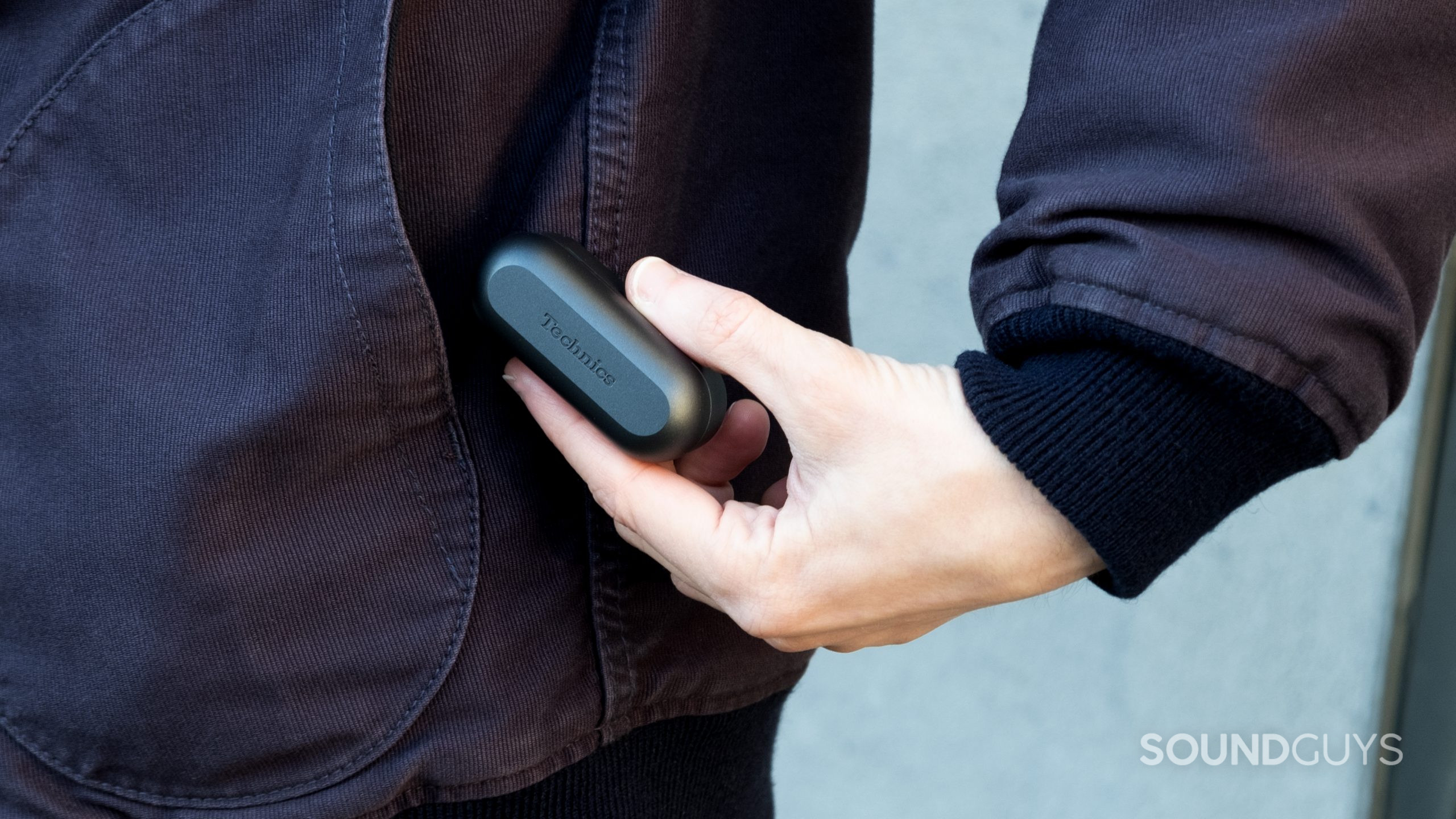
The EAH-AZ40 uses the AAC and SBC codecs. In the Audio Connect app, you can change which you want. Apple users will default to AAC, while Android users may want to try SBC for the sake of consistent quality. Using SBC I experience a barely perceptible latency while watching YouTube on my Android device. Your outcomes may vary depending on a number of factors, including your device.
Start here: What is a Bluetooth codec?
Sporting Bluetooth 5.2, the EAH-AZ40 supports multipoint, which is a nice addition (and surprisingly uncommon). Including multipoint suggests that Technics aims to nab the productivity market, and not just music fans, which is nice (if you can make it work) as many folks fall into both camps these days by working from home. The EAH-AZ40 can only switch between its last two connected devices, but the real issue is that I haven’t yet been able to make it work at all.
How long does the battery last on the Technics EAH-AZ40?
In our objective testing, the EAH-AZ40 battery lasts 6 hours, 25 minutes. We subjected the headset to a constant playback of real music peaking at 75dB(SPL), so you may get a longer battery life if you listen to lower volumes. When you include the charging case and buds, the EAH-AZ40 reportedly has just over three charges. It ships with a short USB-C to USB-A charging cable to stay topped up. During the review period, I never got close to exhausting the battery life, and while it does not break any battery records, it’s a respectable result.
You can also adjust the settings in the Audio Connect app to automatically shut down the buds after sitting idle for a specified period of time. That’s a solid, eco-friendly feature for those who put down their buds for a while, but don’t necessarily always use the case.
How well does the Technics EAH-AZ40 block out noise?
Loading chart ...
Most of the Technics EAH-AZ40 isolating powers come from a good fit. Below 400Hz it pretty much blocks out nothing, which is normal for earbuds without active noise cancellation (ANC). In the high frequencies, it successfully cuts down the volume of incidental noises, while low-frequency hums will still reach you. Remember, your fit influences what you hear. I find that EAH-AZ40 tends to have an invasive fit, and in order to hear the bass, I need to shove the buds in.
The Ambient Sound mode, additionally, uses the mic system to keep you in touch with your environment, and it’s one of the better sounding transparency modes I’ve used.
How does the Technics EAH-AZ40 sound?
Loading chart ...
If you compare the frequency response to our consumer target (in pink) in the chart above, you’ll notice that its low-end output is somewhat lacking. This is reflected in my listening experience, and it doesn’t mean these buds are a failure, but it means you’ll be dependent on equalizing the sound if you like boosted bass—and the Technics app is somewhat limited in that regard.
Related: How we score
Through the mids, the frequency response follows our house curve quite well. It has some under-emphasis (about 5dB) at 4kHz, and a similar amount of mild exaggeration between 7kHz and 10kHz, adding a bit of extra treble to the sound, mostly bringing out harmonics in music. Beyond that, the sound rolls off in the high end a little earlier than the theoretical edge of human hearing, which is unlikely to be noticeable to the majority of listeners.
Lows, mids, and highs
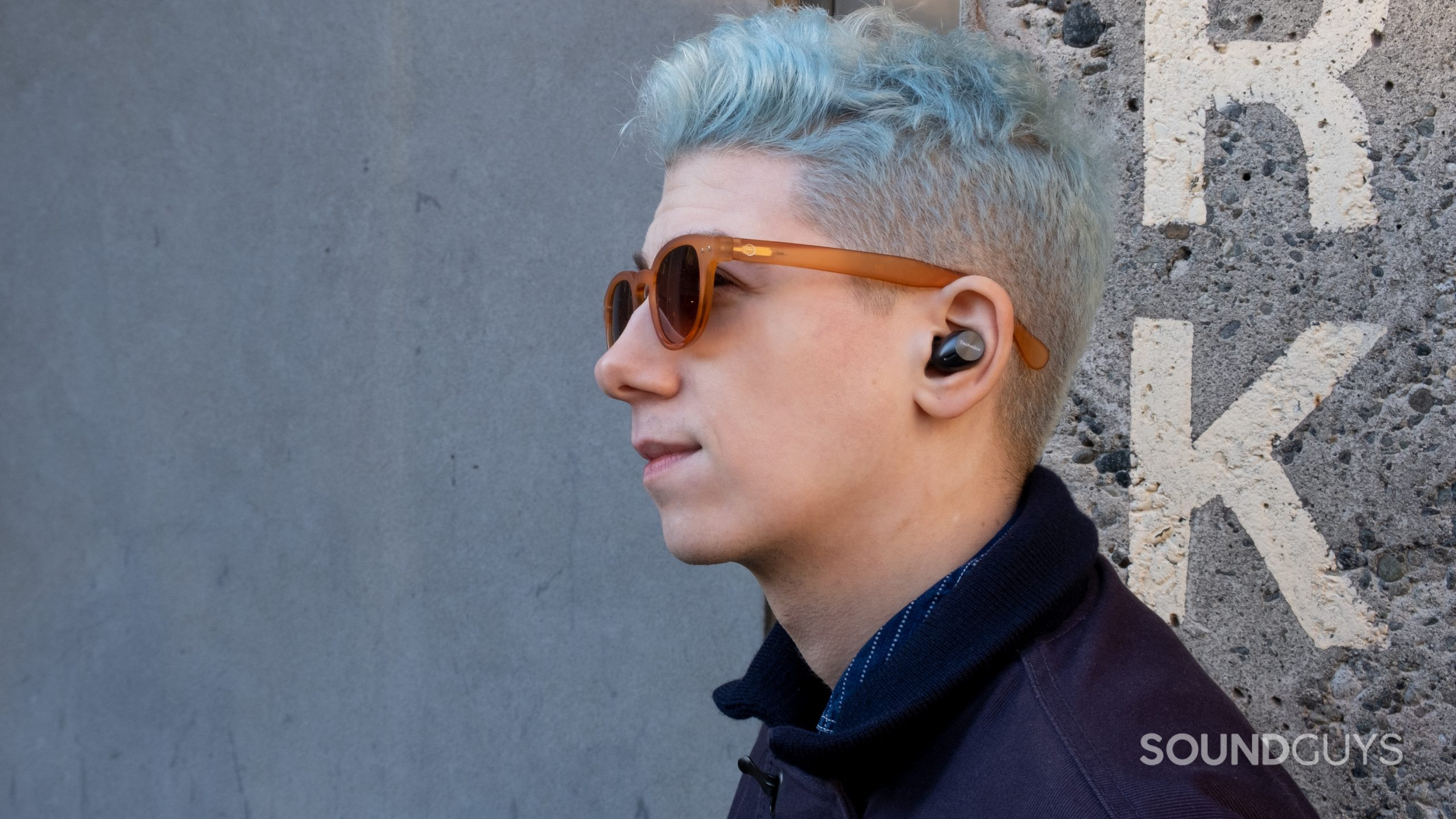
Testing out the buds with a mid-tempo heavily synth-laden track like Another Rise, Another Fall by Miami Horror, I have no issues hearing the low end, despite the frequency response. Admittedly though, some of the very deepest bass notes could be a little louder, especially in the verses and the kick drum doesn’t have a ton of oomph. The multi-layered array of synths and electric piano and heavily affected guitar all sound pretty much spot on.
During the crescendo at 3:36, I can still hear the vocals, guitars, and keys distinctly and basically as intended. Throughout the track, the only stand out is that the already quietly mixed drum machine hi-hat is audible but especially quiet. Most likely it lands in an area of under-emphasis. All in all, it’s not bad and the under-emphasis in bass might serve tracks that are mixed (dare I say) with too much bass well.
How good is the microphone on the Technics EAH-AZ40?
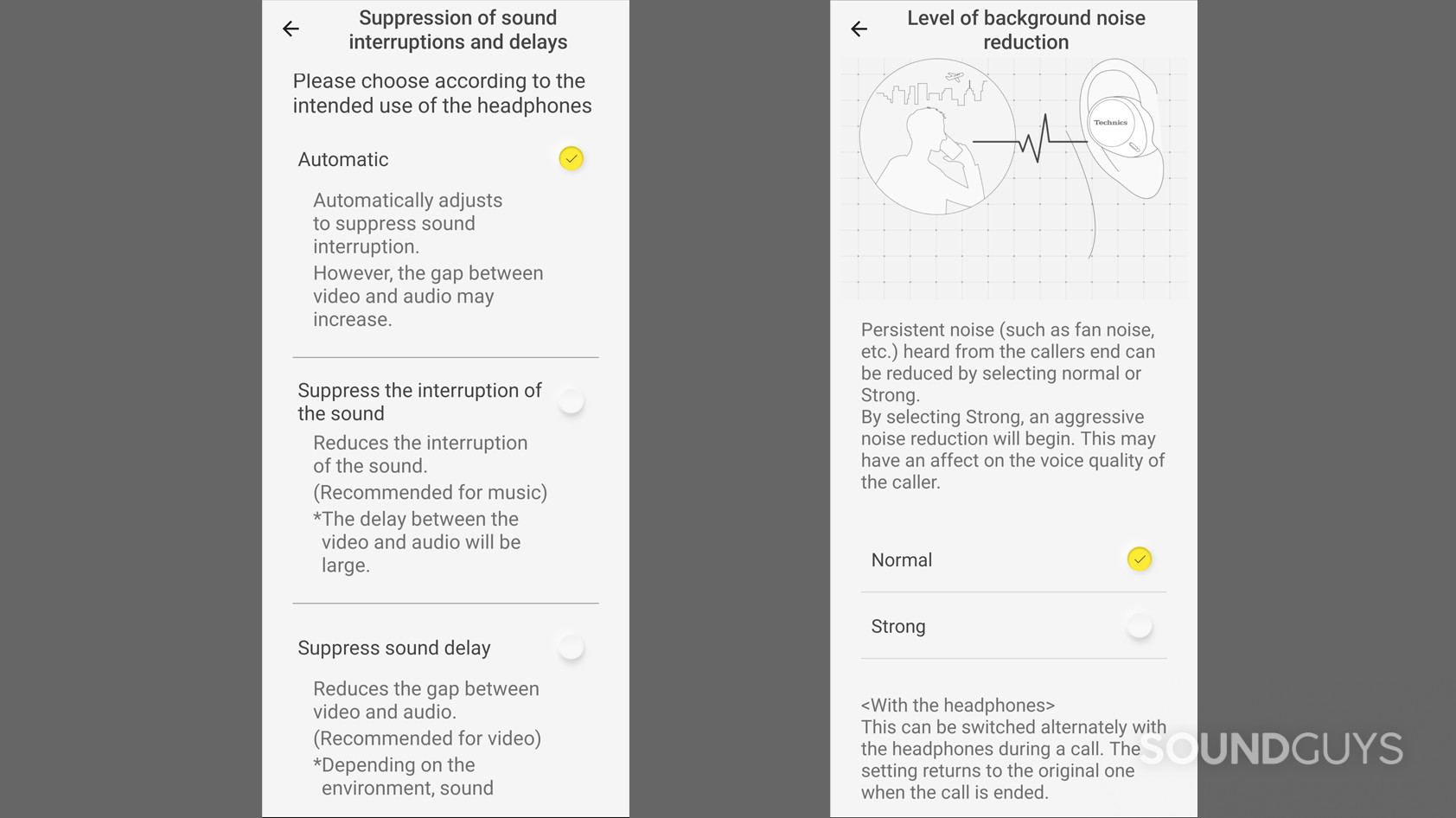
Technics supplies a six microphone array to capture your voice and reject noise. On the whole, it does a very good job. Your voice will sound more or less accurate and while it doesn’t perfectly reject noise (see: wind sample below), it always prioritizes your voice. The street sample demonstrates that it does well at minimizing external noise. Digging into the app shows that Technics put in some effort to make the EAH-AZ40 mic perform well.
There are three (plus two) microphone modes in the Audio Connect app. By default, it’s set to “Automatic” which adjusts “to suppress sound interruption,” with an increased “gap between video and audio.” You can choose the wordier, “Suppress the interruption of the sound,” which also has a large lag. Finally, there’s “Suppress sound delay” which prioritizes minimal lag, at the expense of quality it implies. Besides impacting lag, I don’t hear a difference in quality.
Technics put in some effort to make the EAH-AZ40 mic perform well.
In addition, you can choose how much background noise to remove from the mic: normal or strong. Even when set to “Strong” with “Suppress the interruption of the sound” using the JustMyVoice test I can still hear my keystrokes. I switch it back to default settings of “Automatic” and “Normal” because it sounds about the same, save for not cutting out occasionally when set to “Strong” as the computer can mistake my voice for noise.
In summary: I notice very little difference sonically between all the settings. When left on default, I find it works well enough to not bother messing with the mic settings.
Technics EAH-AZ40 microphone demo (Ideal):
Technics EAH-AZ40 microphone demo (Street):
Technics EAH-AZ40 microphone demo (Wind):
How does the microphone sound to you?
Should you buy the Technics EAH-AZ40?
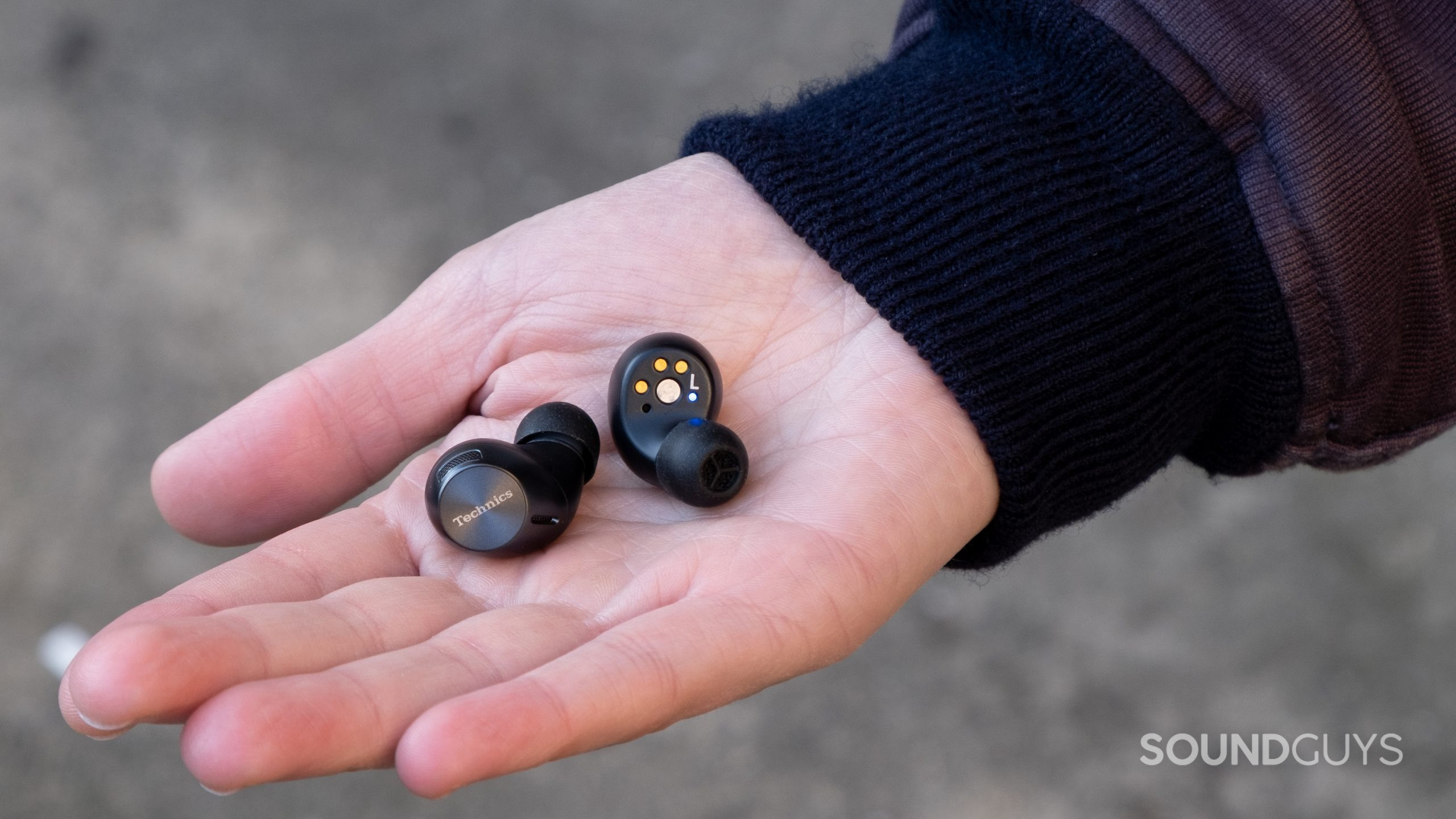
The EAH-AZ40 is a bit of a mixed bag, performing all of its capabilities reasonably well, but none perfectly. If you like having true wireless earbuds that can do most tasks (except active noise canceling) it can. The standout features include the stable connection with fast pairing and microphone quality. Audio is pretty good too, except for the light low end with surprisingly low latency (with this reviewer’s device anyway).
While the app is not a favorite, it has good functionality and the touch controls work very well too. For those who achieve a good fit, the EAH-AZ40 makes a good workout companion with its sweatproofing, Ambient mode, and lightweight. If you happen upon a deal, it’s a very capable set of earbuds worth giving a go.

What are some alternatives to the Technics EAH-AZ40?
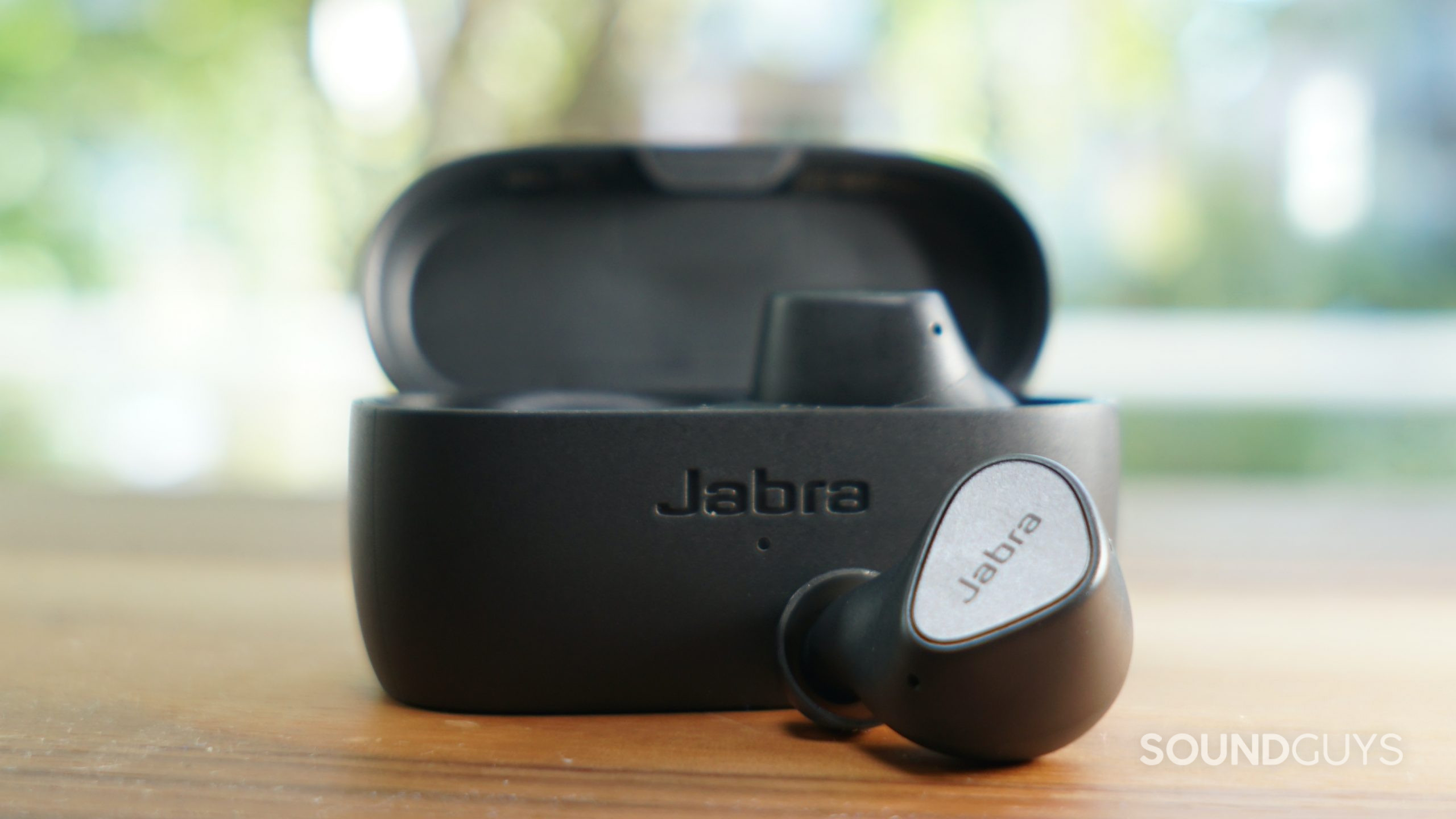
Who doesn’t like a value proposition? For around $80 USD Android users seeking a non-noise canceling set of buds ought to consider the Jabra Elite 3. It comes with SBC and aptX codecs to ensure high-quality streams. The microphone is perfectly serviceable and it’s comfortable. The aesthetic leans more sporty (with a higher IP55 rating) than the Technics EAH-AZ40, but it also has more bass on tap to even out the frequency response.
Apple users will want a set of buds with the AAC codec because that’s the optimal codec to pair within the Apple universe. You can always pick up the Apple AirPods Pro with the coveted H1 chip, but if you want something for less money and don’t need noise canceling (usually the feature driving up prices), you could reasonably grab the Sony WF-C500. It has the AAC codec, a decent companion app, and an alright microphone. Its default frequency response is pretty spot on our house curve as well, so music will sound very good. You may need third-party ear tips to really ensure a solid fit, but at $69 USD to $99 USD, you’re still saving money.
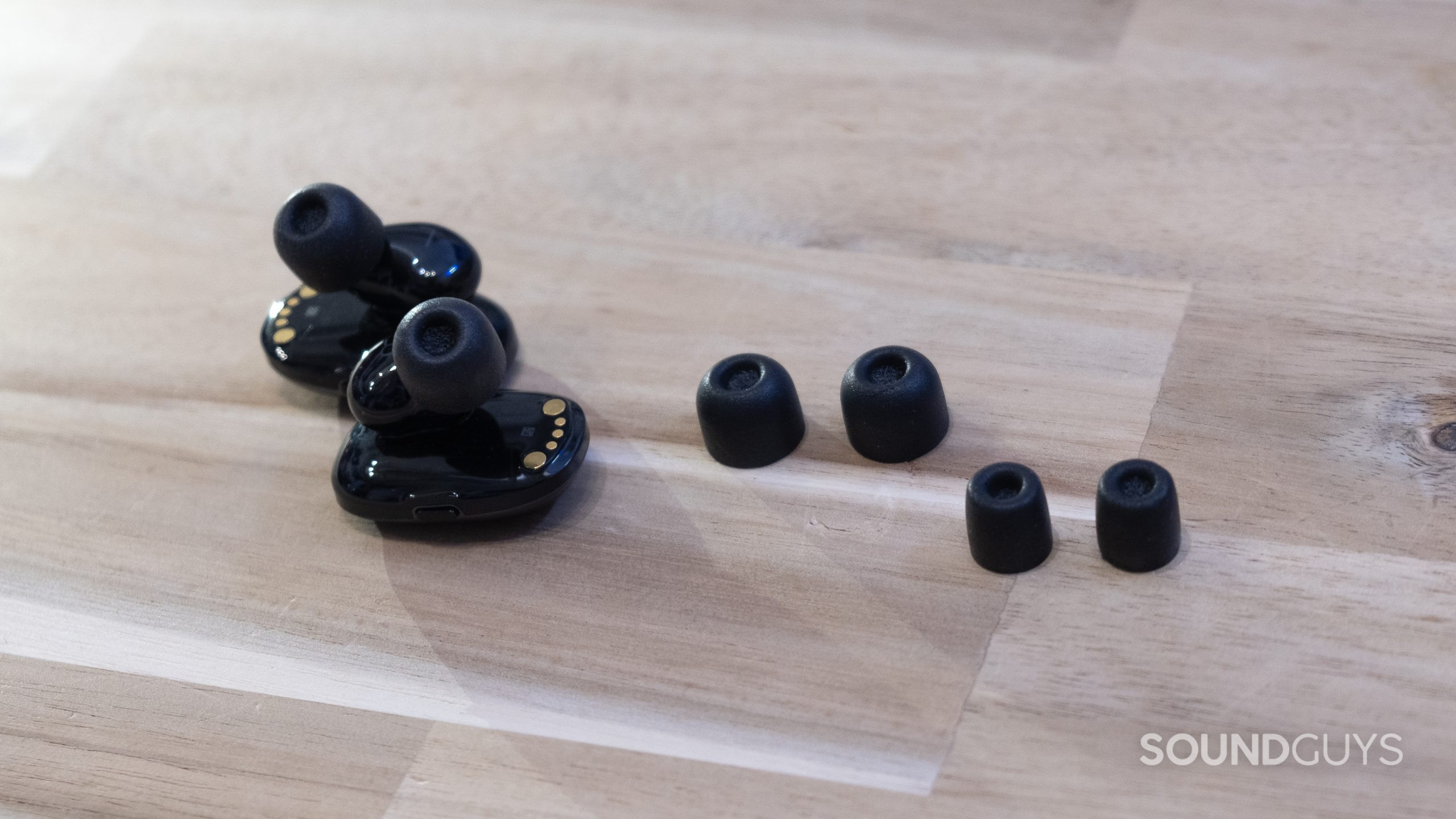
If money isn’t your driving decision maker, just grab the Shure AONIC Free buds and call it a day. It plays well with Android and Apple, with aptX and AAC on hand, and it has an excellent EQ in the app. The isolation performance is frankly awe inspiring, including knocking out the low frequencies normally left behind by isolation. Meanwhile, the transparent mode works just fine for staying alert, while you use it for a run outdoors because it’s sweatproof.
Frequently asked questions about the Technics EAH-AZ40
Unlike the Technics EAH-AZ40, the Technics EAH-AZ60 has active noise cancellation. It also has slightly larger drivers (8mm instead of 6mm), more ear tips (seven, rather than four), and the LDAC codec.
Pairing the EAH-AZ40 over Bluetooth with one device is pretty much foolproof—it automatically enters pairing mode when you remove the buds from its case. The LED on the inside of each bud flashes red and blue. After that you pretty much select it on your phone and it pairs quickly. It’ll prompt you to download the app too.
Technics has instructions on how to use multipoint, but again, I still can’t get it to work successfully with a PC. Maybe these instructions will actually work after a firmware update.
- Remove the buds from the case, and within the first 5 seconds (while the LED shines blue) press and hold the left or right touchpad for 7 seconds.
- Ensure Bluetooth is activated on the new device.
- Select the EAH-AZ40 when prompted.
- If it asks for a passcode, enter “0000”.
- The LED will blink blue twice at 5-second intervals, and a voice will announce you’re connected.
At this point, you should be able to switch between your devices (in theory). It’s usually easier if you have the first device disconnected when setting up multipoint initially, so if the directions don’t work, try it without staying connected to your first device.